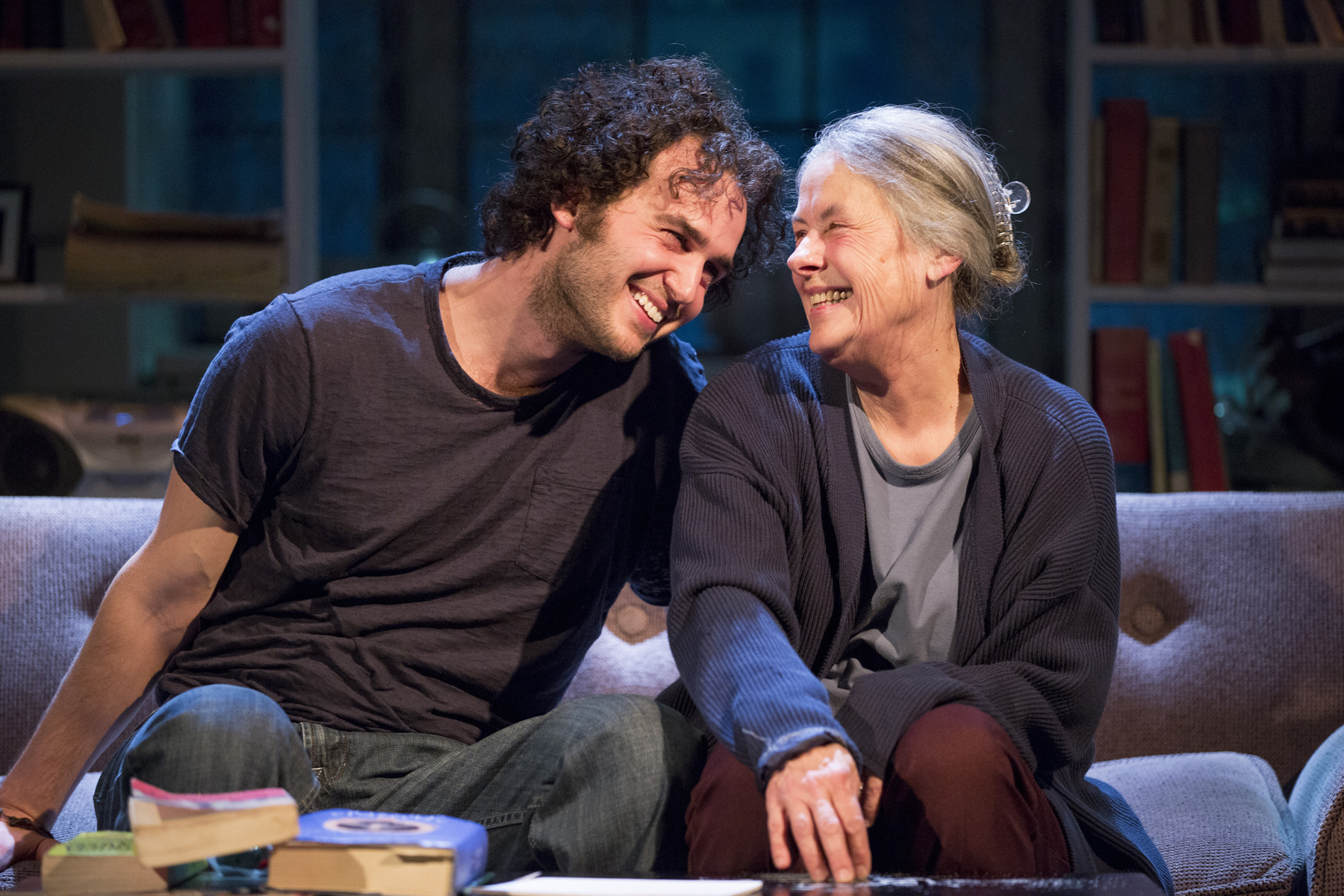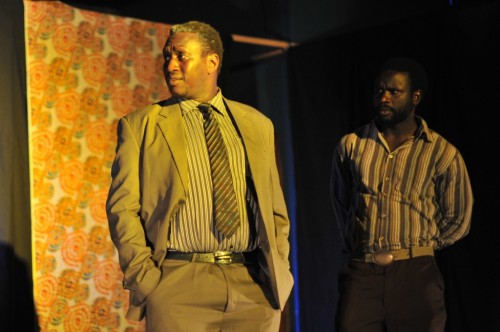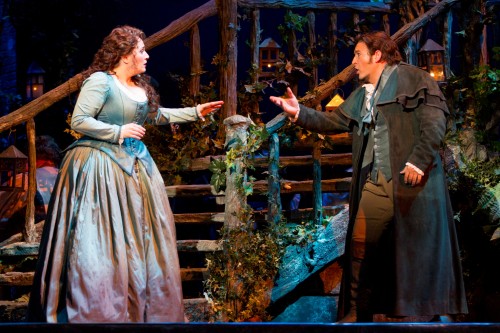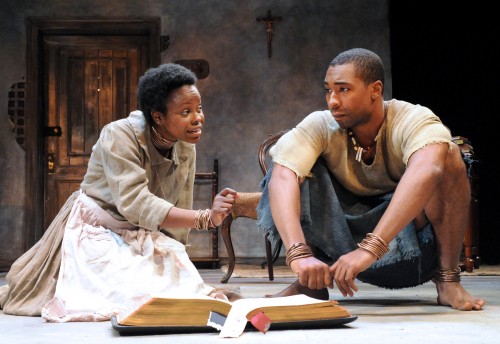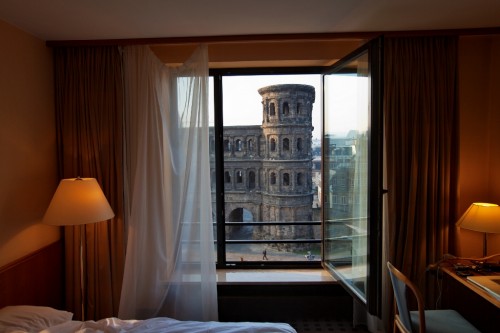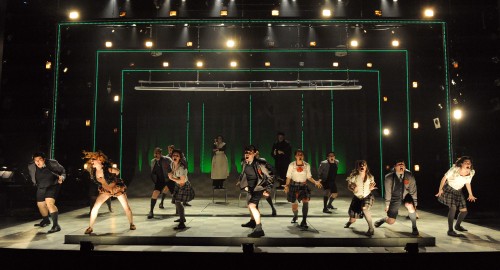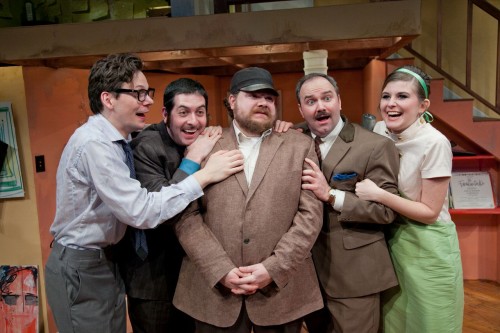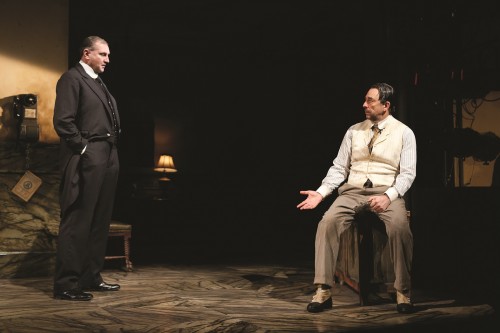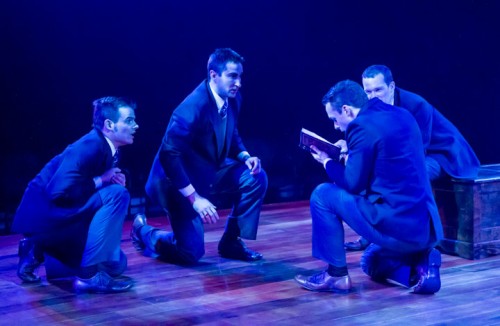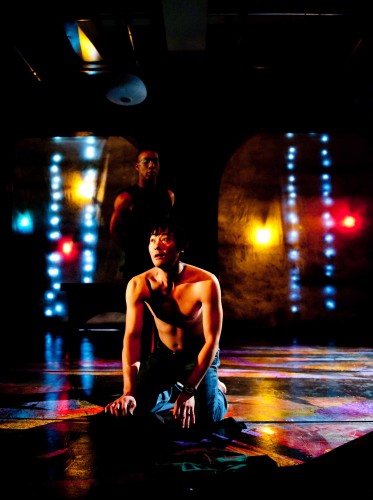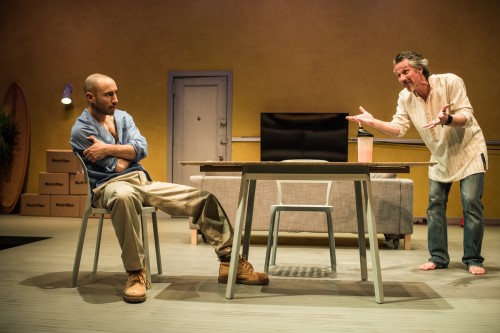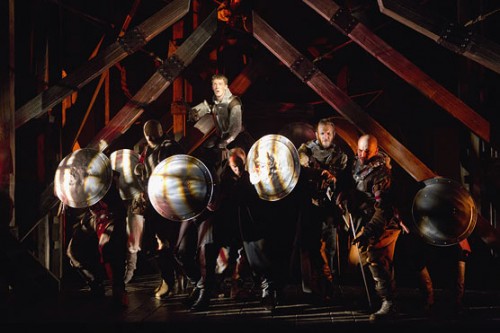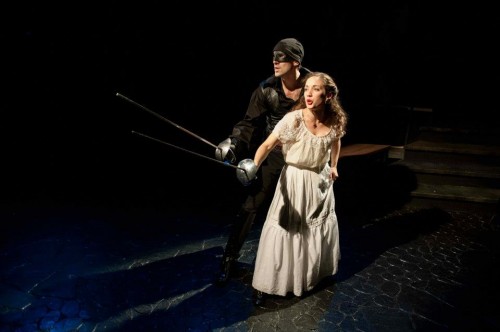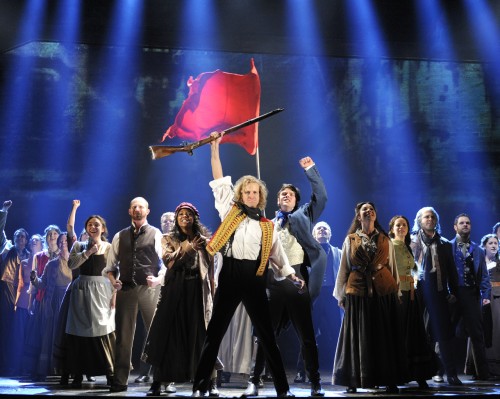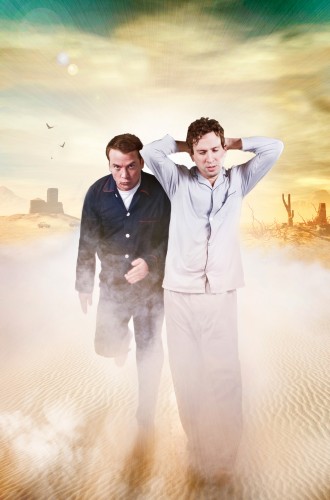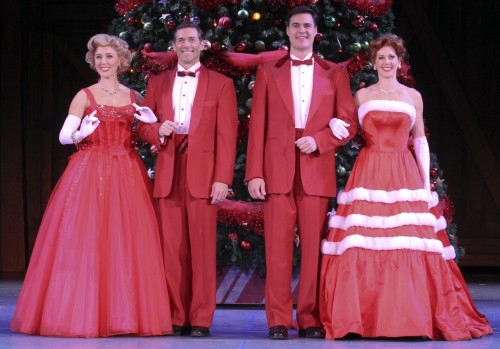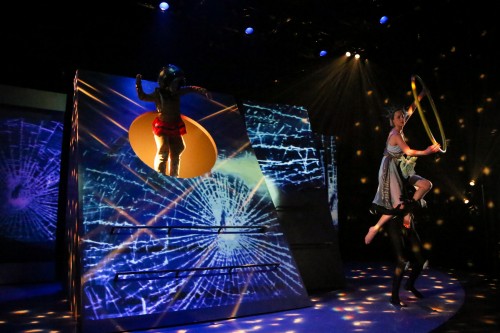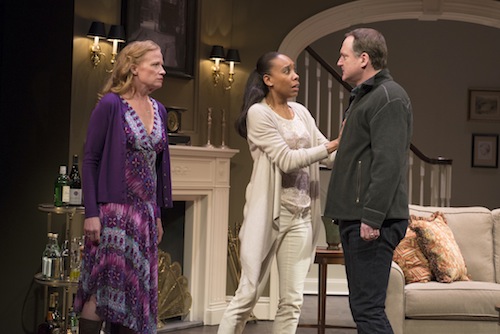
Johanna Day as Margie, Francesca Choy-Kee as Kate and Andrew Long as Mike in Arena Stage at the Mead Center for American Theater’s production of Good People. Photo credit: Margot Schulman.
A woman struggling as she slides further into poverty meets a former boyfriend whose life has taken the opposite trajectory, and the powder keg of class, gender and race is ignited. If David Lindsay-Abaire’s play Good People were a 1940s film, Barbara Stanwyck would star, martyring herself for her man and her child, and many handkerchiefs would be wrung wet by the end. Corset her up and we’ve got Dickens or Hardy. It’s not intentionally a “weepie,” however, it’s the playwright’s well-meaning attempt to honor the working class neighborhood of his childhood: South Boston. But he can’t escape the conventions other writers have fallen into time again when trying to make sense of the cruelty of chance and circumstance, the razor’s edge that separates rich and poor.
Does that matter? After all, it’s well-awarded, and the most produced play of American theater’s 2012-13 season. The essential story is told repeatedly because, sadly, it’s still relevant.
The success of Arena Stage’s production of Good People hinges on its lead actor, Johanna Day, whose bravura performance as Margie is electrifying, and true. We all know someone who ends badly through a combination of coincidence, choice, and misplaced pride. Lindsay-Abaire chooses to end with a hope-delivering deus ex machina that certainly resonated with the audience the night I saw it – the raucous laughter and standing ovation proves that everyone wants to believe there’s always a way through. No matter how bad things get, a good person always gets bailed out. We can laugh at life’s punches, right?
I couldn’t join in, and I can’t explain why without spoiling a major plot point. Doesn’t that prove the play’s successful, if it affects me so much I can’t be objective? When theater actually makes you angry in a complex way? Given the play’s theme, the economic question about whether it adds anything to the debate that’s worth its ticket expense seems even more valid. Is there anything here you couldn’t get from watching one of those old weepies (or Good Will Hunting, as a friend pointed out afterwards), or reading Hardy? Continue reading →
